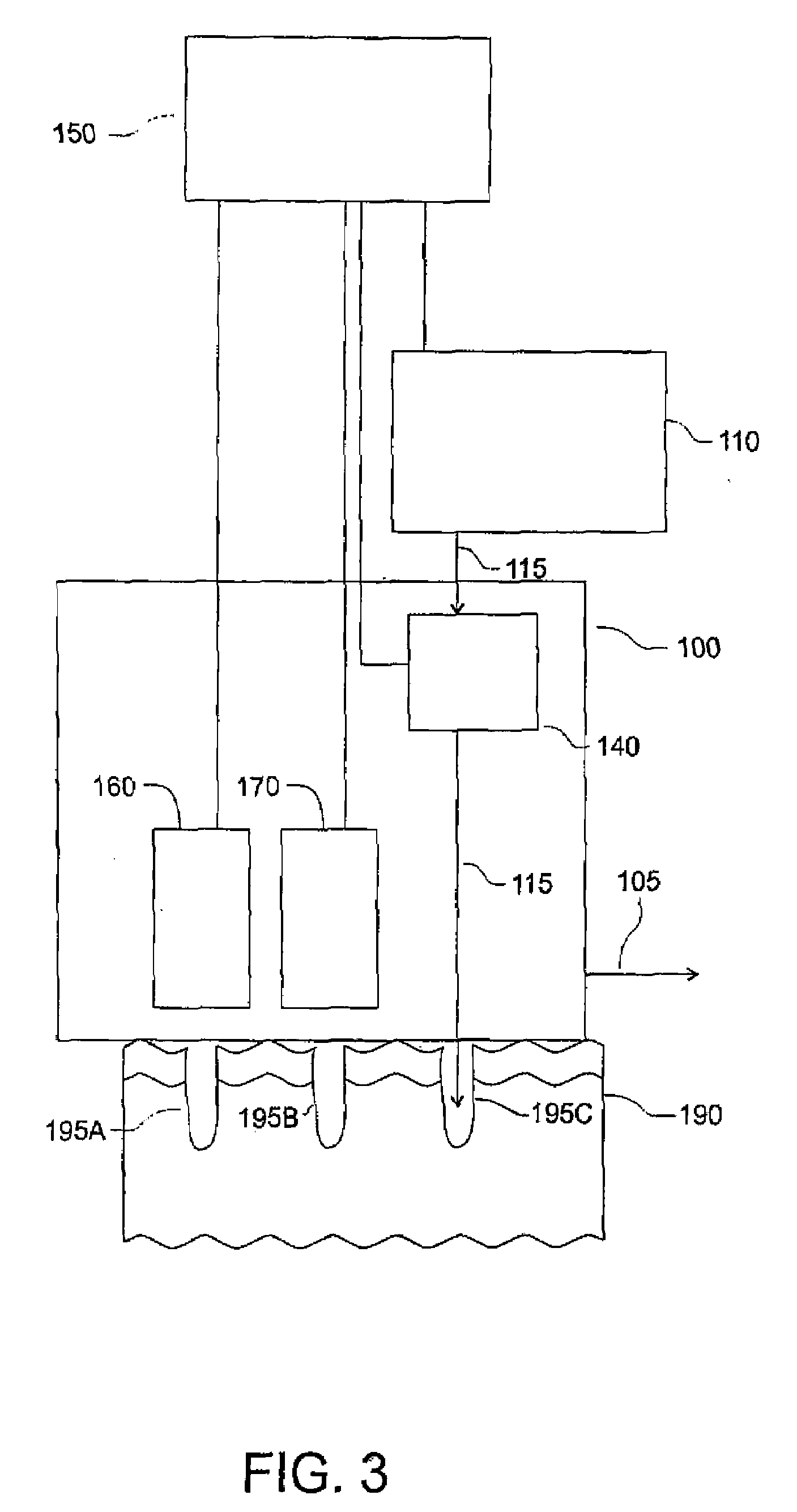Apparatus and Method for a Combination of Ablative and Nonablative Dermatological Treatment
- Summary
- Abstract
- Description
- Claims
- Application Information
AI Technical Summary
Benefits of technology
Problems solved by technology
Method used
Image
Examples
Embodiment Construction
[0036]The example inventive system illustrated in FIG. 3 includes a controller 150 that controls an optical source 110 that emits one or more pulses of optical energy 115. A delivery system 140 is configured to receive and direct the optical energy 115 from the optical source 110 to a target region of skin 190 to create holes 195 in the skin 190. The system further comprises an optional positional sensor 160 and an optional sensing element 170 that each provide feedback to the controller 150. The optical energy 115 that is delivered to the skin 190 can be adjusted or triggered by the controller 150 in response to signals received from the positional sensor 160, the sensing element 170, or a combination thereof. Alternatively, the controller 150 can be preprogrammed to deposit a particular pattern of energy without feedback from either a sensing element 170 or a positional sensor 160. The controller 150 can control the treatment by adjusting parameters of the optical source 110, the ...
PUM
 Login to View More
Login to View More Abstract
Description
Claims
Application Information
 Login to View More
Login to View More - R&D
- Intellectual Property
- Life Sciences
- Materials
- Tech Scout
- Unparalleled Data Quality
- Higher Quality Content
- 60% Fewer Hallucinations
Browse by: Latest US Patents, China's latest patents, Technical Efficacy Thesaurus, Application Domain, Technology Topic, Popular Technical Reports.
© 2025 PatSnap. All rights reserved.Legal|Privacy policy|Modern Slavery Act Transparency Statement|Sitemap|About US| Contact US: help@patsnap.com



